Reinforced Neighborhood Selection Guided Multi-Relational Graph Neural Networks
ACM TOIS 2021
TL;DR We propose a new enhanced, recursive, and flexible neighborhood selection guided multi graph neural network architecture, RioGNN, which navigates the complexity of the neural network structure while maintaining relationship dependency representation. Progress has been made in terms of effectiveness, efficiency, and model interpretability.
Abstract This paper proposes a multi relational graph neural network architecture called RioGNN, which can handle multi relational and heterogeneous graphs while maintaining relational correlation representations. This method uses label aware neural similarity measurement to select the most similar neighbors, and uses an enhanced relationship aware neighbor selection mechanism to select the most similar neighbors. A new recursive and scalable reinforcement learning framework is proposed to improve neighbor selection efficiency. Comprehensive experiments have been conducted on real-world graphical data and practical tasks to demonstrate the effectiveness, efficiency, and model interpretability of this method.
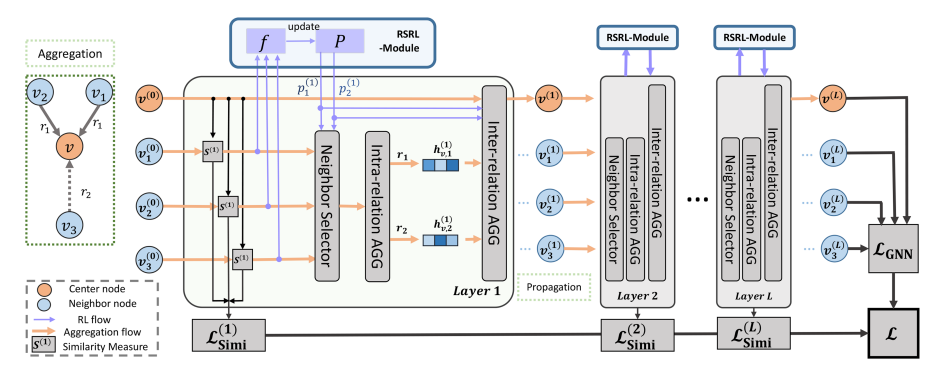
Approach The above image describes the overall architecture of RioGNN, including three key modules: label aware similarity measurement, similarity aware neighbor selector, and relationship aware neighbor aggregator. The label awareness similarity measurement module uses a fully connected network and linear regularization. Each layer uses a fully connected network as a node label predictor, and uses the distance between the prediction results of two nodes as a measure of intermediate similarity. At the same time, a similarity aware neighbor selector was designed to filter out inappropriate behavior nodes, avoiding errors caused by adversarial behavior or inaccurate feature extraction. The next step is to aggregate neighbor information into the relationship, fully embed it, and use the optimal filtering threshold learned during reinforcement learning as the aggregation weight of the mutual relationship, which can reduce computational costs while retaining the importance information of the relationship.
Experiments We compared it with traditional and latest GNN baselines in fraud detection. The baselines are:GCN, GAT, Graph-SAGE, RGCN, GeniePath, Player2Vec, SemiGNN, GAS, FdGars, GraphConsis, HAN, GCT, HSGNN, GraphNAS, Policy-GNN, CARE-GNN. The results are shown in the following figure.
Detection results of RioGNN and baselines:
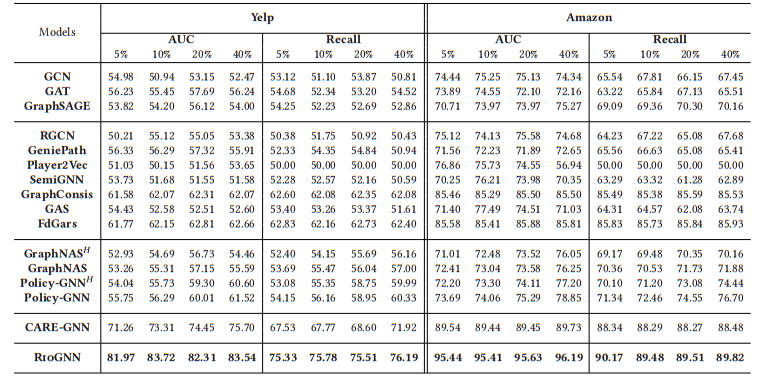
We have also implemented many variants of the Rio GNN model, including Rio GNN2l, BIO GNN, ROO GNN, ROO GNN, RIO Att, RIO Weight, RIO Mean. The classification and clustering results are as follows:
Detection Classification results of RioGNN and variants:
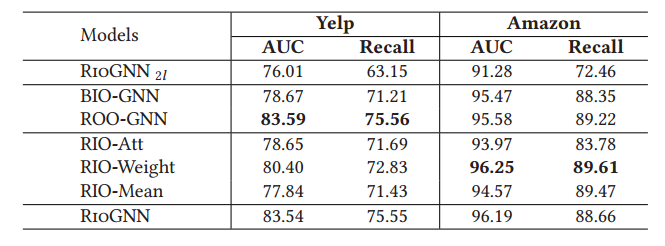
Detection Clustering results of RioGNN and variants:

Explainable RSRL Training Process:
The training scores and thresholds of RioGNN on Yelp and Amazon:
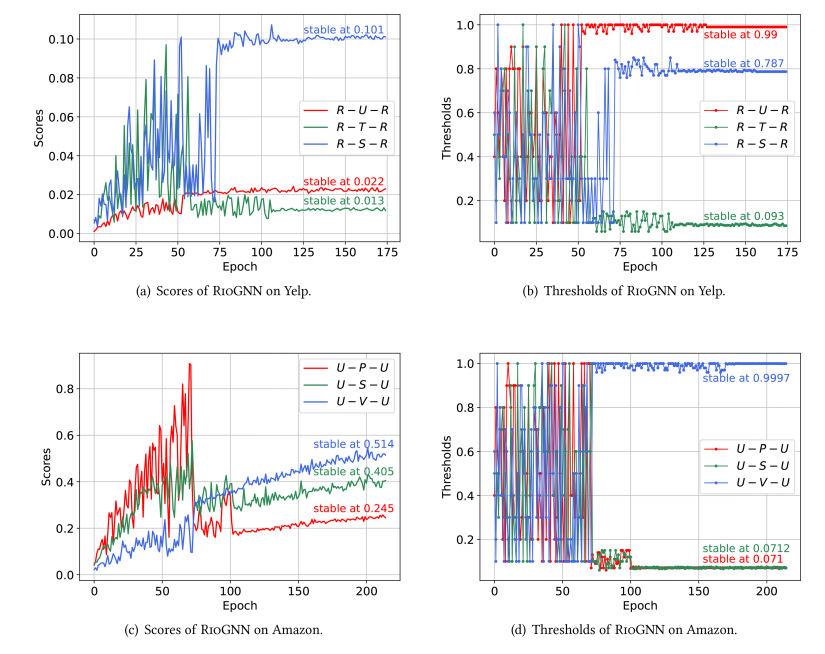
The training scores and thresholds of RioGNN variants on Yelp:
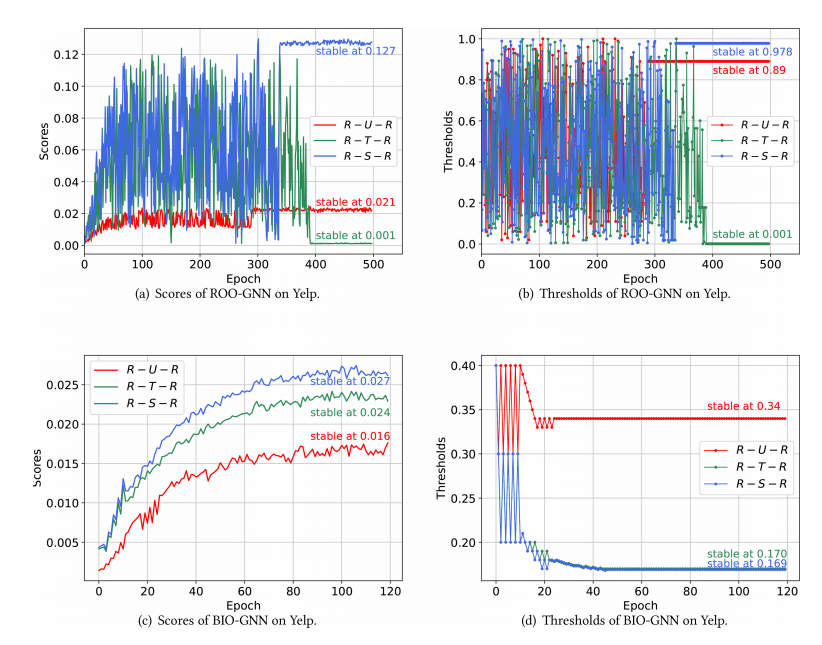
Scores of Multi-Layer RioGNN on Yelp:
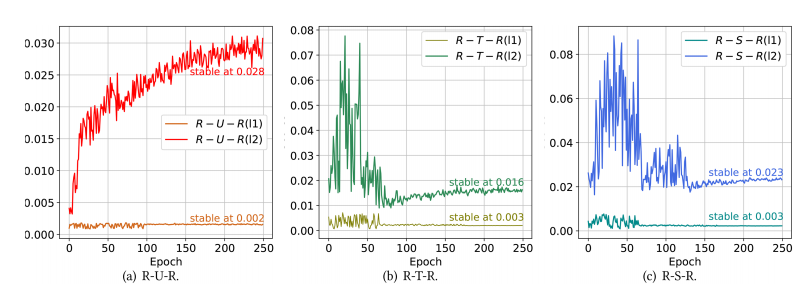
Explainable Reinforcement Learning Training Process:
The training scores and thresholds of RioGNN vs BIO-GNN on MIMIC-III:
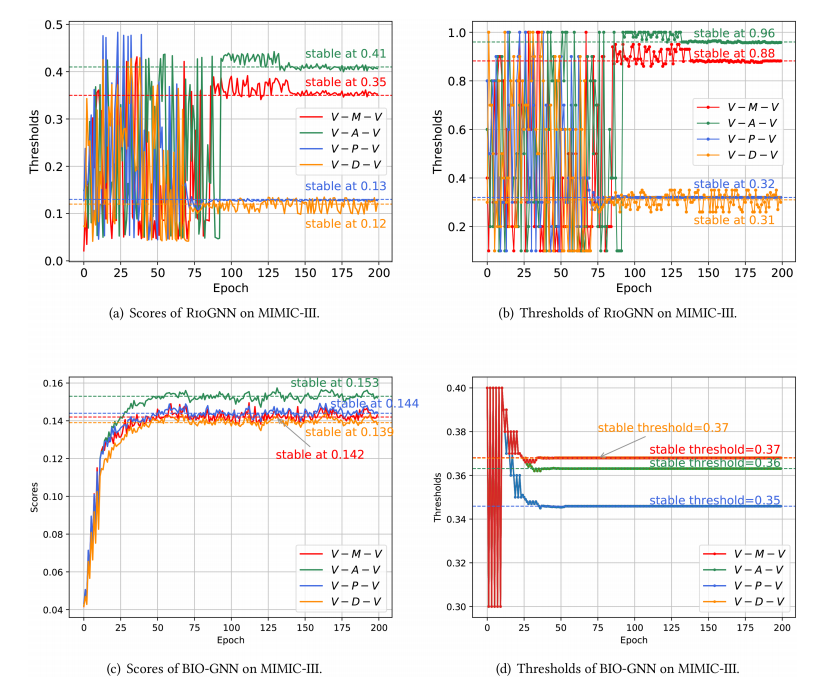
Conclusion This paper introduces a graph neural network architecture called RioGNN, aimed at learning more discriminative node embeddings through enhanced neighborhood selection and providing explanations for the importance of different relationships. We used reinforcement learning technology to design label aware neural similarity neighbor metrics and reinforcement relationship aware neighbor selectors, while also designing a recursive and scalable framework to optimize the computational efficiency of neighbor selection. After experiments on three real-world benchmark datasets, it was found that RioGNN performed better than state-of-the-art alternative methods on all datasets. The future goal is to adopt multi-agent RL algorithm, further enabling RioGNN to adaptively identify meaningful relationships for each node and extend it to graphic data analysis and other application tasks.